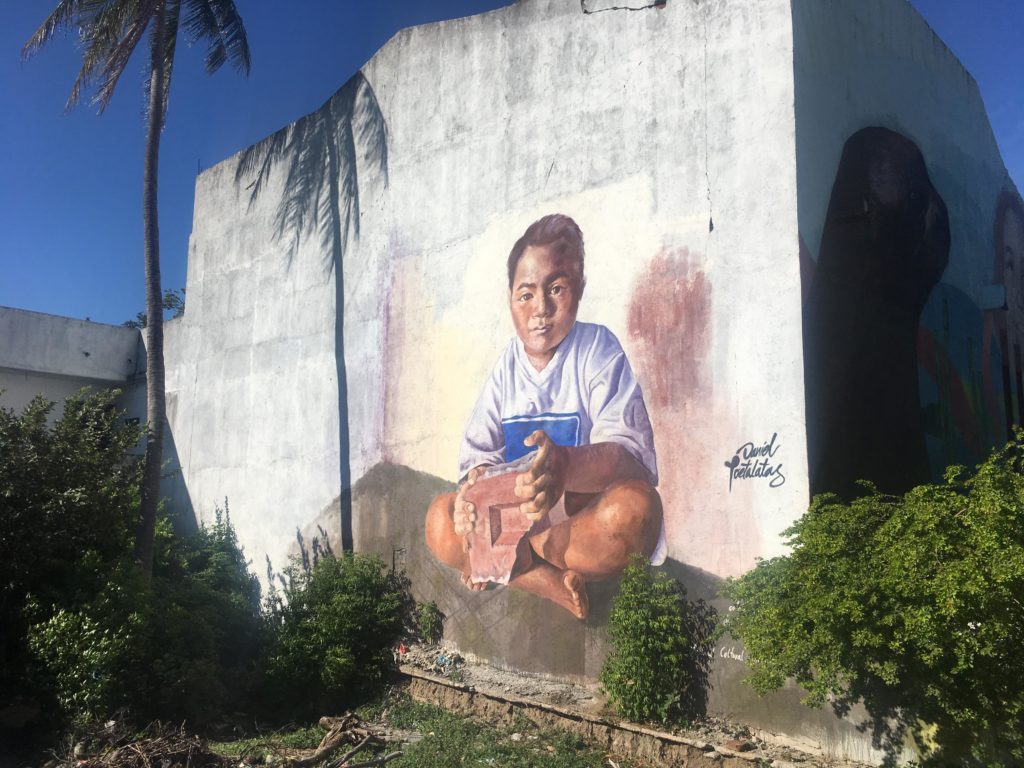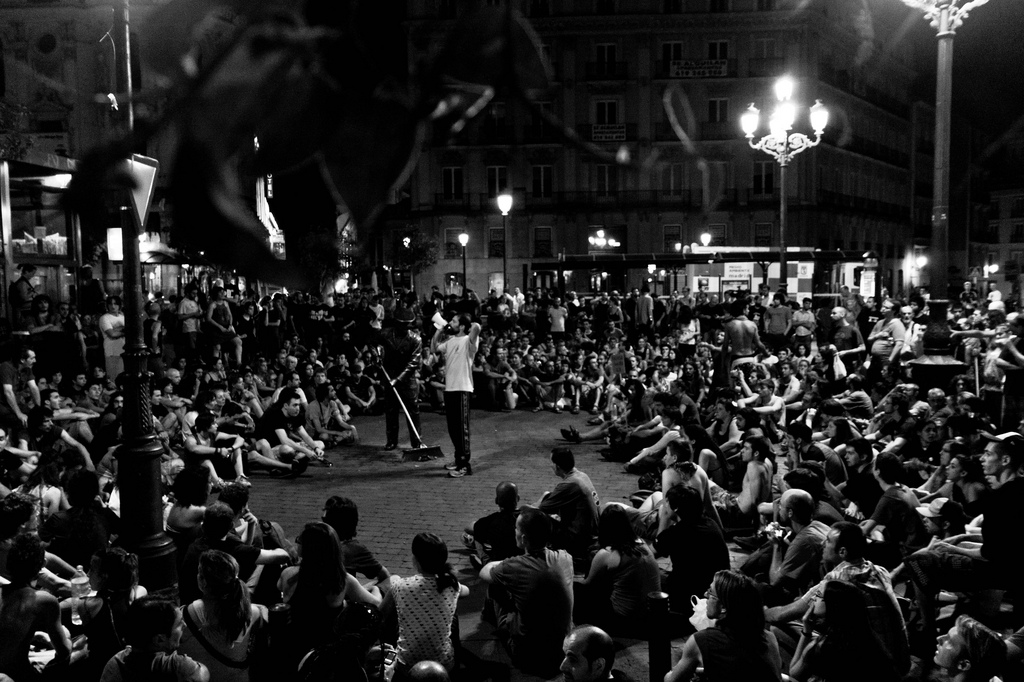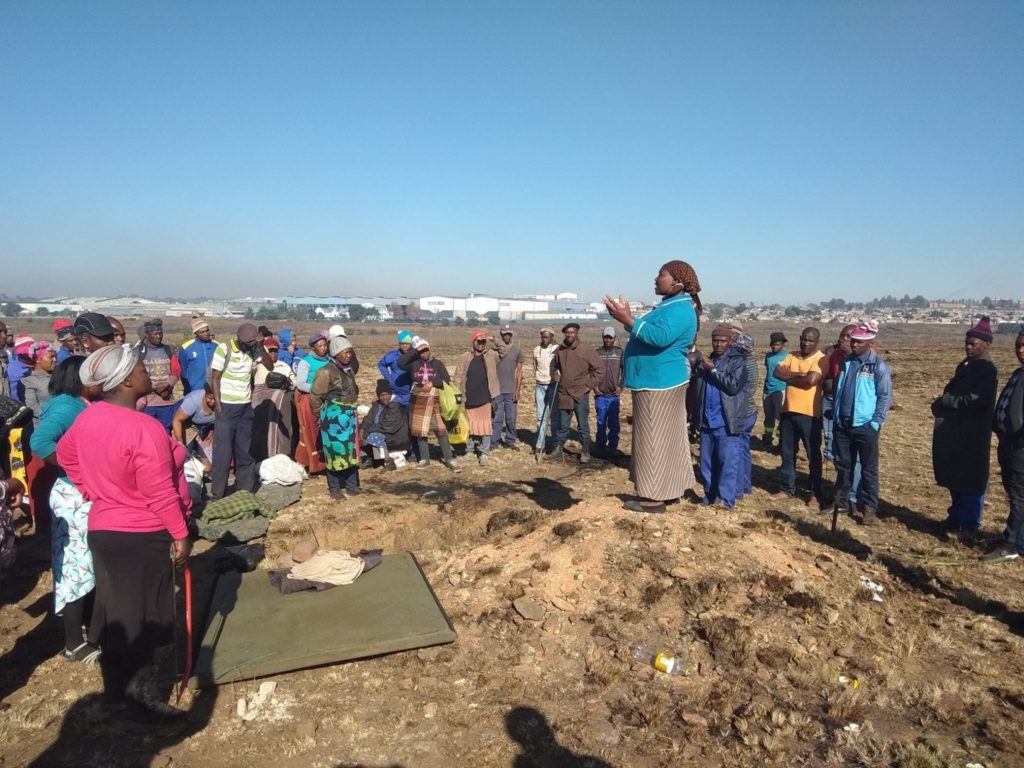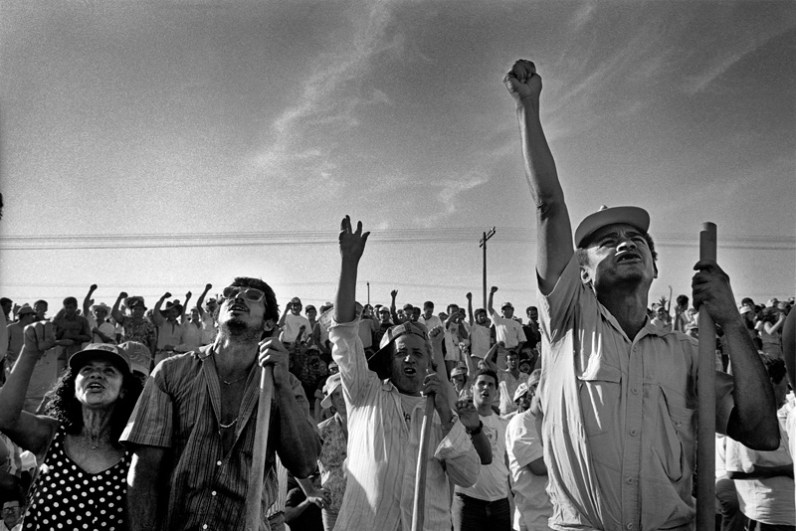
by Addison Winslow
Juchitán is a very windy place. I don’t think I’ve ever been anywhere so windy. Up in the city of Oaxaca, people said it would be hot—“un chingo de calor”—but the pummeling winds at times make it almost frigid. Sounds like it does this pretty much all year round, in the whole Isthmus region.
The Isthmus of Tehuantepec is the thinnest point between oceans in Mexico, stretching roughly from Coatzacoalcos in the state of Veracruz, to Salina Cruz, just south of here. It’s probably the least imaginary line between North and Central America, on account of the abrupt break in the mountains (the chain that runs up the whole country, blending further on into the Rockies and Sierra Nevadas), which reemerge again if we proceed south into Chiapas.
There are other remarkable features: the urban centers on the Isthmus are some of the only ones in North America which are majority Indigenous, zapotecos. Some local guys also speak of how the Isthmus is known to have the most beautiful women in Mexico. But if you’ve heard of the area, it’s more likely for the earthquakes last year. I talk to people everywhere who lost their home, or maybe only half of it. The municipal palace of Juchitán collapsed; so did the old colonial market. In the long past year people have been focused more on rebuilding their own places of refuge, and the market plaza persists as an improvised labyrinth of tarps and narrow, crowded pathways between butchers, fruit stands, and taquerías.
My companions and I are staying in what used to be a restaurant; it is now a meeting place and the home of two organizers, some cats, and a near-hairless Xoloscuintle dog. There’s a pile of cots for visitors like us. While we were lounging around one morning, a small group came in to have a meeting. It went on for about five hours, in which time we read some, napped, and didn’t eavesdrop as much as we should have. Finally, one of the live-in organizers came to invite us to introduce ourselves and explain Symbiosis, the group I was representing and asking them to join, now that they’d wrapped up the agenda.
Before we began, one of the organizers filled us in on their struggle. They’re coordinators from a group called the Assembly of the Pueblos of the Isthmus in Defense of Land and Territory(APIIDTT). It’s part of a network of local assemblies in the area, whose existence predates the earthquake. Their collective activities include a refusal to pay electric bills, and resistance to megaprojects planned for the region. But the assemblies have greater ambitions, and at least one has become a veritable government outside the government. “We try and organize collectively to take care of our issues, but in a horizontal manner,” the organizer tells us.
***
Mexico has a fierce revolutionary tradition, co-opted without pretense by the ‘Institutional Revolutionary Party’ (PRI) which controlled government from the end of the revolutionary period in 1929 until the year 2000, when the viceroy of the Coca-Cola empire in Mexico, Vicente Fox, and his rightwing National Action Party (PAN), came to power. The appellate ‘PRIAN’ was given to the fluid collaboration of the two dominant parties—however it was under Fox’s administration that documents were released detailing the ‘Dirty War,’ a coordinated terror campaign in the 1960s and ’70s that had suppressed leftist activism and paved the way for the full force of neoliberalism to come.
As it tends to, the left survived those trying times, in a couple recognizable forms. The first is what we can call the ‘partyist left,’ la izquierda partidista. After blatant electoral fraud in 1988, the losing insurgent candidate Cuauhtémoc Cárdenas created the Party of the Democratic Revolution (PRD), along with Andrés Manuel López Obrador (then still a ladder-climbing apparatchik) among others. The PRD ultimately operated much like other parties, so that even AMLO, after two presidential runs of his own and more high-profile battles over election fraud, left to create a new party in 2012, the National Regeneration Movement (MORENA). In the July 2018 elections, MORENA won the presidency (in AMLO) as well as majorities in both houses of the legislature, and ran competitively for nearly every state governorship, winning four in the south of the country. Many analyses have been written of what this victory represents.
“There’s always been a ‘left’ in Mexico,” I was told: “In the way of life of the people, from below, where it hasn’t been undone.”
But here we are concerned with the other left. “There’s always been a ‘left’ in Mexico,” I was told: “In the way of life of the people, from below, where it hasn’t been undone.” Two manifestations of this should be mentioned, both with roots threading back to the Mexican Revolution and the influence of the peasant uprisings associated with the name Zapata.
One goes by the slogan usos y costumbres, which means that the traditions of indigenous peoples entitle them to a peculiar style of local governance, which tends to be a council of elders, assembly decision-making, or a mixture of both. The other came out of revolutionary land reforms, which divided many vast private landholdings into communal farms called ejidos. Constitutionally, the highest authority of the ejidos is the general assembly, which ordinarily convenes every six months, but can also be called on other occasions by an initiative supported by twenty percent of the members.
The ejidos were inalienable, off the market, until that proved incompatible with NAFTA and had to be done away with. Perfectly compatible with NAFTA, of course, were the billions of dollars of agricultural subsidies the US and Canadian governments use to undervalue the primary commodities produced by the majority of the world’s population. The result of the legal vulnerability of the ejidos combined with the economic clout of North American industrial agriculture was the upending of rural society in Mexico, rapid urban proletarianization, and one of the largest migrations in human history over Mexico’s northern border to the United States.
In the decade or two before NAFTA, though, some staunch Maoist guerrilla sorts had formed clandestine organizations, and some of them took their activity into the Lacandon jungle. Here on the forgotten periphery of the continent, they met the local people, and together watched as the swirl of the capitalist world prepared to suck them in. In the meantime, many of them busied themselves preparing, with some rifles, to make themselves heard.
The Zapatista uprising reignited hope against capitalism worldwide, not least in Mexico. In 1996, the Zapatista Army of National Liberation (EZLN) made the call for a gathering of indigenous peoples which resulted in the creation of the National Indigenous Congress, around and through which emerged what we might call the ‘movements for radical democracy.’ Speaking broadly, this is what makes up the ‘other’ left in Mexico.
***
One of the people in the meeting in Juchitán, the mother of our friend who lives here, is a delegate to the National Indigenous Congress. Each of the local assemblies has one. The original impetus for the formation of many of these assemblies on the Isthmus was to coordinate the collective refusal to pay power bills, insisting that electricity is a human right. The assemblies consisted of the people involved in the strike. One of them has gone ten years now without paying, and the government apparently hasn’t cut them off. In January 2019, the assemblies, all together, will enter negotiations with the federal government for the first time. This was the subject of their meeting.
By contrast: I myself come from Chico, California—the valley city that absorbed most of the refugees from the fiery apocalypse of Paradise, CA this past November, which was caused by the negligence of our local (private) electric monopoly. While the fire was still burning, the governor declared power companies immune to lawsuits for the damages of infernos they provoke. I was listening closely.
Meanwhile, at least in some cases the purview of the assemblies on the Isthmus has expanded far beyond being a utilities union. In one town, Álvaro Obregón, the community assembly has a majority of the town’s support, and something approaching administrative independence, except that public money still passes through the hands of the ‘official’ municipal government, which also has the power to approve infrastructure megaprojects. The people of Álvaro Obregón recently formed a community police force in response to threats from paramilitary groups; the county police will hang out at the entrance to the town, but don’t really enter.
***
The focus on electricity returns us to how windy it is. With foreign investment related to the carbon credit scheme created by the Kyoto Protocol, the Isthmus has been the site of the construction of massive wind turbines. One of a series of megaprojects planned for southern Mexico is a new string of turbines along an extensive sandbank closing in the lagoon just south of here. It would be the largest wind energy project in Latin America. By one account, it was only the moment when the company arrived, bringing barely any machinery (yet), and closed off the entrance to the sandbank with armed guards, that people noticed there was something menacing about their intentions.
Initially, it was difficult for my companions and me to understand this resistance to clean energy.
Initially, it was difficult for my companions and me to understand this resistance to clean energy. But it scares away the fish which the people along the coast live off of. In a documentary we were shown, people speak of the sea as their mother. The Isthmus is also a narrow and important passage point for migratory birds, which are, with appalling frequency, being knocked dead by the sweeping turbine blades. The locals see it as a matter of dispossession and territorial integrity—and, as a matter of fact, with the construction of these turbines, electrical bills have increased.
After listening awhile, we explained Symbiosis. It was almost awkward—after their descriptions of their situation, principles, and intentions, it felt like we were parroting them. But such are the convergences, and this is grounds for unity. Most of those present expressed enthusiastic interest in our work, and we agreed to talk further. Several of them will be in Chiapas soon, and we’ll reconnect there.
***
We came to Juchitán on the recommendation of an elder of the movements in Mexico, Gustavo Esteva. Esteva was at one time a CEO, then a Trotskyist, later an adviser to the Zapatista army in their negotiations with the federal government, and now is a ‘deprofessionalized intellectual’ settled in the city of Oaxaca and serving a critical advisory role to the assembly of La Universidad de la Tierra, or Unitierra.
Before everyone split for the holidays, Esteva had had us around for one final conversation at Unitierra, at a small table tucked beneath shelves of political economy texts. He took us through a lengthy story—really, a comprehensive theoretical construction which would properly make its own essay. As with the assemblies he then sent us to investigate, it seemed from his telling that Unitierra and Symbiosis have converged upon the same practical conclusions, and it seems we’ll be counting each other as partners in our respective endeavors. They call their project Crianza Mutua, which doesn’t exactly have an English translation.
In light of the rest of what Esteva shared with us, I’ll turn back to the story of the Zapatistas. The EZLN has, for decades now, called for cross-border collaboration in the resistance to global capitalism, convening gatherings on the national, continental, global, and even intergalactic levels. In the Sixth Declaration of the Lacandon Jungle (2005), they declared themselves dedicated to working with all dispossessed peoples; that Cuba and Ecuador would just have to let them know where to send the solidarity corn and crafts. Simultaneously, they were keen never to mark themselves as a separatist movement. The rallying cry was ¡Nunca más un México sin nosotros! The national liberation was for Mexico, but only a more inclusive Mexico.
At a gathering about a year ago, Esteva told us, someone speaking on behalf of the Mixe people said that they don’t consider themselves part of the ‘original peoples,’ or part of Mexico at all. On the tail end of their word came one from the Zapatistas; they had been considering the same thing: ¡Nosotros sin México! Since 1994, they had always flown the Mexican flag in their events and tours; apparently no one had noticed that for several years now they’ve ceased to do so. The world is undergoing changes, and so are the movements. In 2017, out of the National Indigenous Congress was formed the Indigenous Governing Council (CIG), with the initial goal of selecting a spokeswoman to run as an independent presidential candidate and bring attention to their issues and beliefs. The elections this year, of course, went the way of the partyist left, and the CIG were outside as critics.
But in August of this year, the CIG met to assess the just-ended campaign and discuss what happens next. It was there that the EZLN, following a presentation of an analysis of the world, put forward several proposals, which will be further discussed at the international gathering in Chiapas at the end of this month and year. For a taste, here are three of them:
…we propose to double down on the work of the CIG Support Networks in order to open our collective heart to all of the rebellions and resistances that emerge and persevere wherever we might be, in the countryside or the city, without regard for borders…
…to begin or continue the struggle to grow both the demands and dimensions of the Indigenous Governing Council, with the goal of extending it beyond original peoples to include workers of the countryside and city and all of those who have been discarded or marginalized…
…to begin or continue the analysis and discussion toward the creation of a Coordination or Federation of Networks which avoids any kind of centralized or vertical command and which spares no effort in building solidarity, support, and sisterhood/brotherhood among those who form it…
There’s not really much of a coincidence. In common between Symbiosis in North America and the resistance in Mexico sit the Kurds, resounding out of Rojava. In every location I’ve mentioned, people made reference to them as an inspiration for the scale-up of organizing in the works, generally agreed to be the next step forward. What we are part of is a global movement emerging, and, with due humility, we should be stoked.
Though we can all feel equal under the long curve of ecological collapse, in North America we have a difficult assessment to make regarding our responsibility with our neighbors not far to the south.
At the same time, though we can all feel equal under the long curve of ecological collapse, in North America we have a difficult assessment to make regarding our responsibility with our neighbors not far to the south. I contend that the most predictable form a reactionary municipalism could take is a passive reproduction of the economic inequalities embedded over centuries in the land and labor-power of nations. It’s also perhaps the most innocuous form of hierarchy, because we can content ourselves as having addressed the concerns of everyone in the room, and still discount the majority of the world’s population.
We have a contradiction to reconcile in the twofold objectives of Symbiosis. While on the one hand, dual power is concerned with building autonomous, local capacity in the struggle, we’re engaged in Symbiosis with the rapid upscaling of the resistance for a world system change. Without venturing to envision exactly what conditions will be required for confederal unity, I’ll continue the tradition of recommending we all read “The Tyranny of Structureless” another five times, but also provide for our collective memory an anecdote from what I believe to be the most ambitious international confederation up until now.
The World Trade Organization operates [operated] on consensus, with each member country having equal say. As preferred in the neoliberal order, the coercion and hierarchy are in the details. It was the poor countries who made the call for clear and determined structure, having been shut out of expensive and impromptu proceedings among the tight clubs of wealthy countries. In 2003, a meeting in Cancún was cut short by a walkout protest after a shystie manipulation of the preliminary draft of an agreement. As the rules had it, it would require consensus to remove points put in by the wealthy countries, though not to insert them in the first place.
We can tear down borders in our declarations yet have them reemerge in proceedings, out of the persistent asymmetry of material resources.
In the spirit of solidarity, we can outdo the mutual suspicion that plagues the international relations of nation-states. But we shouldn’t assume it will be so easy. We can tear down borders in our declarations yet have them reemerge in proceedings, out of the persistent asymmetry of material resources. We will have to find ways to structure equality over what the market provides for us.
Speaking of structures and proceedings, I will close with an official pronouncement of the hereby improvised Intercontinental United Antinationalist Resistance Working Group, which currently consists of my companion and me (you’re all welcome to join), declaring our firm resolve:
- to investigate the tastes and ambitions of the CIG and their Support Networks in regard to an intercontinental organization of resistance and rebellion;
- to suggest to whoever shows up next week in Chiapas that we all do it together;
- to develop, in conversation with those who are down, a compatible, if not equivalent proposal for the structure of the Symbiosis confederation as that which emerges from the expansion of the CIG.
We’ll also be thinking of some more pointed projects which can bring together and mutually benefit the movements on all sides of the continent, and would very much like to hear suggestions. Actually, if anyone wanted to discuss, on any level, all of this that is going on, my companion and I would be very pleased to have support and input.
It is our task to see that borders are not only torn down at the start, in documents, but that we continue tearing them down all through the process until all the fences, and walls, and lines in the sand are wiped away with them.
Addison Winslow is a member of Symbiosis and currently lives in Chico, California.



